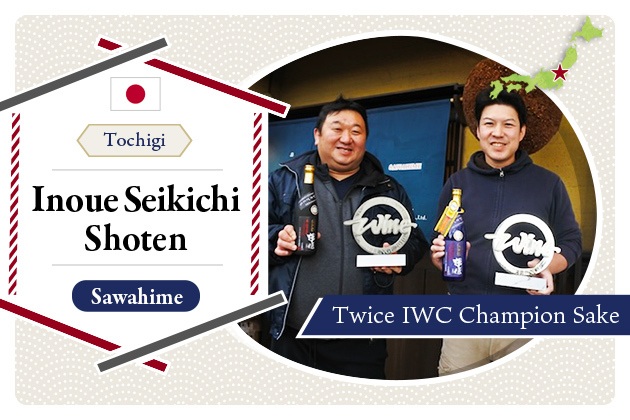
2024.01
10
What is Gohyakumangoku? Genealogy of the Sake Rice that Drove the Light-Dry Sake Boom
The type and quality of rice used to make sake depends on the flavor that the brewer is most likely to express. Sake made with the sake rice "Gohyakumangoku" is often dry. In this article, we will explain the characteristics, genealogy, and production area of Gohyakumangoku, the sake rice that has led the light and dry (tanrei karakuchi) sake boom.
What is Gohyakumangoku?
Gohyakumangoku was born in Niigata Prefecture, a famous rice-producing region in Japan. It is the second most produced sake rice by type, following Yamadanishiki, the king of sake rice.
Suitable for cold climates
Yamadanishiki and Gohyakumangoku are both popular sake rice varieties that are considered easy to produce sake of consistent quality. The two varieties alone account for about 70% of the total demand for sake rice by type.
Gohyakumangoku is a small-grained variety with a large shinpaku (white part in the core of the rice, which is coarsely gathered starch). Compared to Yamadanishiki, Gohyakumangoku is harder and less dissolvable, but it is also easier to make koji and easier to polish due to its high water absorbency, which are advantageous characteristics for sake rice.
Another characteristic of Gohyakumangoku is that it is wase, an early maturing rice. Since larger grains of sake rice are considered easier to produce, late maturing rice (okute) is the most common way to grow rice. However, in cold regions, winter comes before the rice is harvested. Gohyakumangoku, an early variety, grows quickly and is harvested early, and is grown mainly in the Hokuriku region (the northwestern part of the main island of Japan).
Driving the light-dry sake boom in Japan
Sake made from Gohyakumangoku is characterized by its clean, crisp, light flavor. It is said that Gohyakumangoku was the driving force behind the tanrei karakuchi (light-dry) sake boom that occurred around 1980, especially in Niigata.
Until then, the most commonly produced sake was the inexpensive sanzoshu (sanbai zojo seishu/triple brewed sake.). Sanzoshu was made by adding alcohol to sake to compensate for a shortage of raw rice due to the effects of World War II. Sometimes sugar was added to the sake to balance the flavor, and the sweetness was said to leave a sticky taste on the palate. Eventually, in reaction to this, there was a demand for sake that was clean and crisp.
This is where sake from Niigata Prefecture came into the spotlight. Starting with Koshi no Kanbai by Ishimoto Sake Brewery, followed by Kubota by Asahi Shuzo and Hakkaisan by Hakkaisan Brewery, Niigata's light, dry sake with a light, crisp taste shocked consumers and triggered a light-dry sake boom. These brands have become long sellers not only in Niigata Prefecture, but also as representative brands of Japanese sake.
Genealogy of Gohyakumangoku
Gohyakumangoku was bred from a mother Kikusui and a father Shin No. 200 and was born at the Niigata Prefectural Agricultural Experiment Station Nagaoka. 1957, it was certified as an encouraged variety and named Gohyakumangoku to commemorate Niigata Prefecture's rice production of five million koku (about 750,000 tons/Go means five, hyakuman means million, goku is same as koku).
At one time, it boasted the largest acreage of sake rice, but this changed as Yamadanishiki won high acclaim at sake competitions, and in 2001 it was overtaken by Yamadanishiki.
Kikusui, the mother of Gohyakumangoku, is a variety known as phantom sake rice because it is a variety that once disappeared in 1945. Kikusui has excellent sake brewing aptitude and has the famous sake rice Omachi as its parent. Sake made with Kikusui is characterized by a gentle mouthfeel with a strong rice flavor.
Main production area
Niigata Prefecture, where Gohyakumangoku was created, is the main production area, and is still the prefecture where Gohyakumangoku is most commonly grown. The rice is grown in a stable environment with good weather from spring to summer and little damage from heavy rains and typhoons. In the winter, the hours of sunlight are shorter and the snowfall is heavy, but the abundance of melted snow is also suitable for sake rice cultivation.
Outside of Niigata Prefecture, this variety is mostly grown in the Hokuriku region. Toyama Prefecture is the second largest producer after Niigata, followed by Fukui and Ishikawa Prefectures. Outside of Hokuriku, Fukushima Prefecture, which is adjacent to Niigata, is the fourth largest producer, and Hyogo Prefecture is the fifth.
Reference: Production status of rice suitable for sake brewing in 2019, Ministry of Agriculture, Forestry and Fisheries
Summary
We have described the characteristics, genealogy, and production areas of Gohyakumangoku, which has supported the light, dry sake boom in Niigata. Gohyakumangoku is a variety often used to make sake with a clean, light flavor, but in some regions it is used to make sake with the exact opposite characteristics.
Please try and compare the wide range of flavors that cannot be categorized as tanrei karakuchi.
Knowing the characteristics of sake rice will make it easier to find the sake that best suits your tastes. Take a look at our other articles explaining other varieties.
Pickup Articles
2019.01.18
2019.01.25
Trending Articles
Popular Articles
Recent Articles













